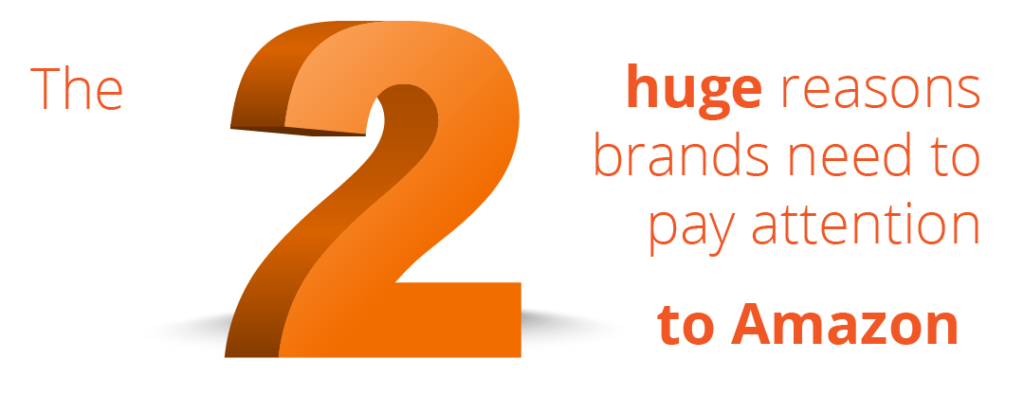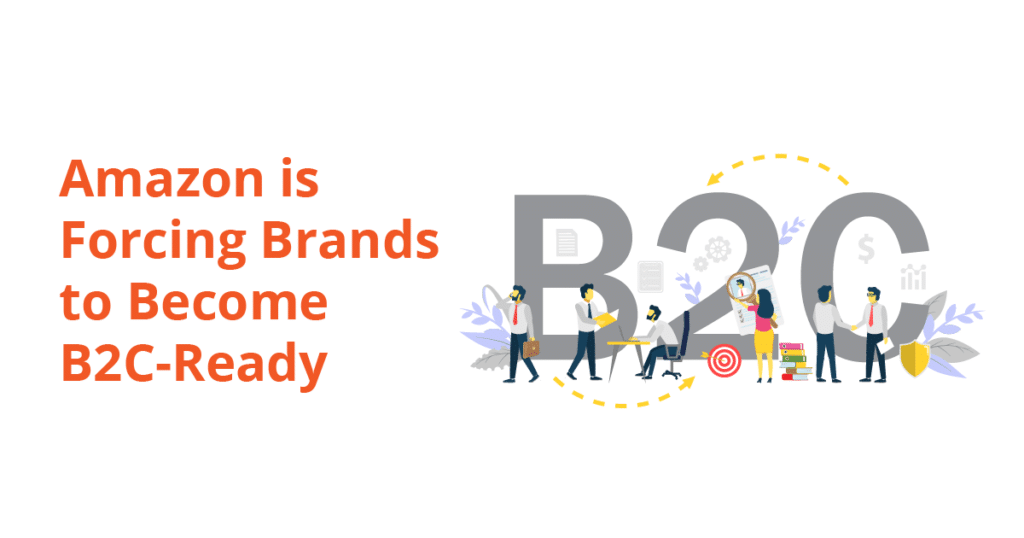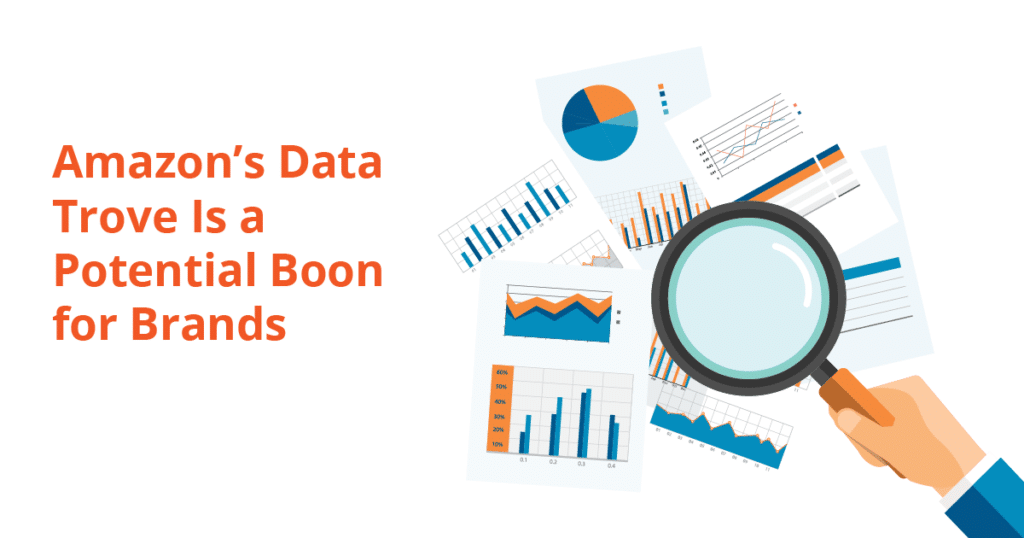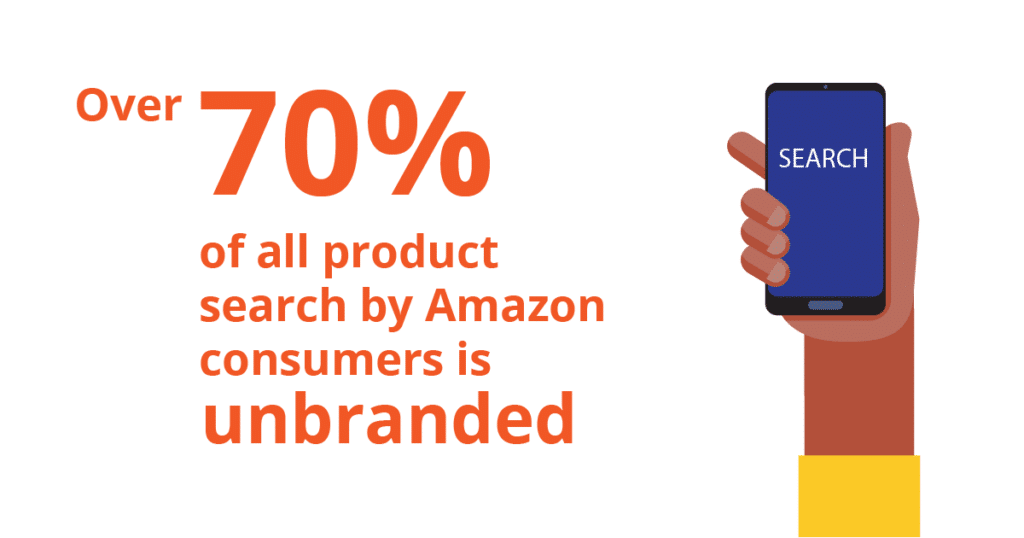
By early 2018, the Amazon channel accounted for 4% of US retail sales (and 44% of US online sales). But the impact of what happens to brands on Amazon is causing tidal waves throughout brand leadership teams around the globe. Amazon is the center of US e-commerce—at least for consumer markets, and likely soon for business markets. At the same time, this channel is often misunderstood by brand and sales executives who are tasked with protecting and growing their brands. In this post, I’ll explain why Amazon should be a crucial focus for brand executives today, for the sake of their brand’s health and success on Amazon and elsewhere.
Your Brand Is Probably on Amazon, Whether You Like It or Not
There’s a strange truism about the Amazon channel: if the brand you represent is even slightly popular among consumers, chances are someone has figured out how to get your brand onto Amazon. You may not want your products to be sold on Amazon, but chances are good that they’re on there anyway. Few brands have such tight control of distribution that no units leak onto the Amazon channel.
You see, as an open marketplace, Amazon welcomes practically anyone to sell products. As long as the products aren’t counterfeit, sellers can compete to get consumers’ business on Amazon. This is the case even if those sellers are unauthorized sellers, product diverters, or sellers of gray market product. Amazon welcomes the lower prices that such competition typically creates, and doesn’t go out of its way to put the brand’s best interests first.
Here’s another truism to consider: if you’re a brand executive, no one cares about your brand as much as you do. But it’s likely that many of the Amazon product listings for your brand were created by sellers that treat your products only as widgets that can generate margin for them. These sellers aren’t interested in treating them as branded products that need to be constantly and carefully managed to ensure your brand promises are consistently messaged to consumers across all online and offline channels.
Monitoring What’s Happening to Your Brand on Amazon Is Nonnegotiable
At Buy Box Experts, we’ve talked with far too many brands that still haven’t designated someone on their teams to be responsible for regularly tracking what’s happening to the brand on Amazon. Just because the brand’s leadership team hasn’t explicitly chosen to launch on Amazon doesn’t mean there isn’t a lot of activity already under way on Amazon that’s currently impacting the brand.
In the rest of this post, I’ll discuss why Amazon should be top of mind for brands—and how they should be rethinking the role of the Amazon channel in their overall business strategy. In the next post, I’ll talk about the importance of good channel governance. I’ll also review some best practices brands can use to capitalize on the sales opportunities offered by Amazon while protecting themselves from the noise and commotion of a channel occupied by millions of sellers, hundreds of millions of consumers, and more than a billion product listings.
Brands: Why Amazon Presents 2 Big Opportunities Today
Why should brands pay attention to the Amazon channel, even if they don’t plan to sell on it?
- First, Amazon is unlike most channels where brands sell their products today—the opportunity to learn from end users far exceeds the types of data that traditional brick and mortar channels offer.
- Second, Amazon’s role as an advertising platform, competing for ad budget with other more familiar advertising channels, presents a big opportunity for brands.
Opportunity #1: Amazon is Forcing Brands to Become B2C-Ready
Most brands have grown up as B2B brands. The leadership team of the brand has focused on product development and sourcing/manufacturing issues, while selling to the end consumer has involved intermediaries like distributors or retailers.

Yet today, even if the brand doesn’t want to sell directly to Amazon consumers, there are two important questions that the brand leadership team needs to answer:
- What value do retailers offer the brand on Amazon that the brand couldn’t easily support itself?
- What can the brand’s team learn from the Amazon channel to help improve the brand offering?
Amazon Is Erasing the Potential Value of Retailers
So what additional value do retailers offer brands on Amazon? Retailers may still add value for brands by handling interactions with Amazon consumers. In brick and mortar channels, the retailers’ value is often easier to distinguish from what the brand is expected to do. But on Amazon, thanks to the Fulfillment by Amazon (FBA) service, which helps sellers handle the fulfillment of individual orders, practically anyone with product can sell and fulfill orders on Amazon without their own warehouses or logistics capabilities.
This combination of capabilities begs the question: are some brands losing out on retail margins (instead of their usual wholesale margins) by not using FBA? If the brand’s current retailers aren’t handling much complexity that the brand wouldn’t otherwise be prepared to handle for the opportunity to make higher retail margins, the brand may want to shift its go-to-market approach on Amazon. Plus, when the brand has dozens of retailers all selling the same products on Amazon, the resulting price competition doesn’t help retailers or the brand.
So how can brands take advantage of Amazon as a B2C channel?
We’ve encountered brands that have chosen to dip their toes into B2C operations on the Amazon channel, usually for selling through end-of-year/excess inventory. Rather than selling this inventory to distributors or retailers at heavy wholesale discounts, the brand can sell the products itself at lower discounts that have less negative impact on the brand’s price points.
We’ve also seen brands use Amazon as a testing ground for new products, flavors, sizes, or bundles. Amazon allows brands to test these products in smaller quantities than if they were selling them through a network of distributors or retailers.
Amazon’s Data Trove Is a Potential Boon for Brands
The Amazon channel offers a huge amount of easily available public data on consumers’ brand and product likes and dislikes. Using the product review data visible on every Amazon product listing, anyone can figure out what consumers do and don’t like about a product. Today, thousands of private label sellers (i.e., companies building their own brands, often leveraging Amazon as their only distribution channel) are using this data to build a better mouse trap that will better satisfy the needs of Amazon customers.
But so often, established brands end up holding the short end of the stick as a result of the efforts of these upstart sellers. We’ve seen national and international brands lose significant share to small Amazon-channel-only brands that know where and how to source Amazon consumer data that gives them the leg up on designing better products.
To avoid this scenario, brands must be prepared to leverage all the consumer insight that’s easily available on Amazon.

Every brand should designate an employee responsible for tracking product reviews of the brand’s own Amazon listings as well as key competitors’ listings. While any given product review may not add much insight on its own, careful reading and analysis of the product reviews will usually reveal unexpected product uses, product preferences, or design concerns. The brand team might otherwise spend considerably more dollars to collect these insights through market research or external consulting support.
Opportunity #2: Amazon Advertising Represents an Underappreciated Opportunity for Brands
Whether a brand team decides to participate actively in selling its products on Amazon, it must understand that at least some of its competitor brands are participating in selling on Amazon. Today, over 70% of all consumer product search on Amazon is unbranded—meaning customers are not searching for products using specific brand names (e.g., “running shoes” instead of “ASICs running shoes”).

In addition, Amazon has accelerated the number of opportunities for brands to advertise their products at the top of product search results. This lack of brand preference at the point of search, combined with advertising slots available to the highest bidder, has allowed smaller and lesser-known brands to garner bigger market share on Amazon than they otherwise have in other online or offline channels.
For Amazon resellers that source inventory at wholesale prices from brands or distributors, there isn’t usually a lot of margin left for advertising after paying the typical Amazon selling commissions and fulfillment costs. When brands are represented on Amazon by third-party resellers (authorized or not), those resellers are typically less willing to invest in advertising on Amazon, leaving a potential gap in share of voice for the brand.
Brands Have to Get Smart About Advertising on Amazon
To close this gap, brand marketing teams need to get up to speed on what it takes to compete for the limited Amazon advertising space. Many brand marketing teams are well versed in Google advertising, social media advertising, and email campaigns to drive consumers to key retailers’ websites. But they must also keep in mind that Amazon is already where more than 50% of all product searches in the US start today, while the top search results on Google often feature Amazon product listings.

Since US consumers are already searching primarily on Amazon, and purchasing more on Amazon than any other online channel, there’s a great opportunity for brands to leverage Amazon as an advertising platform. And they can do this even if the brand isn’t selling on Amazon.
Who’s Selling Your Brand on Amazon?
There’s another issue that complicates the decision to spend ad budget on Amazon: the question of how many unauthorized or unknown sellers are capturing sales of the brand on Amazon.
While a brand may want to advertise its products on Amazon, doing so without first controlling its distribution can create perverse incentives. When a brand spends more money on advertising, this drives more sales to the product listings. But if the beneficiaries of the advertising are unauthorized or unknown sellers—sellers that the brand doesn’t want to have—this generates more revenue for these sellers. And it further motivates more such unwanted sellers to jump onto the product listings in search of a portion of the sales.
Now You Know Why Amazon Deserves Your Attention—What’s Next?
Brands that want to harness the promise and potential of Amazon in 2019 must be prepared to navigate a shift from B2B to B2C operations and to tap into the potential of Amazon’s advertising platform.
We’ve talked about why Amazon is a crucial area of focus for brands in 2019—and beyond. In part two of this series, we’ll talk about how to maintain effective control of your brand on the Amazon channel, so that you can drive higher sales and profits, protect your brand identity, and improve the efficiency of your advertising.

If you’re one of the estimated 20%–40% of brands who fire their agency annually, you can’t focus on that vision if you have to keep searching for the right support. BBE proudly retained >95% of our clients last year while applying focused dedication to our brand partners. If you’re ready to start over for the last time, contact us and find out why leading brands have partnered with us for so long.

